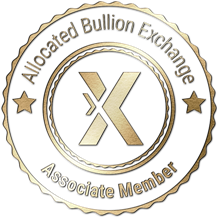What Does the Future Hold for the Chinese Economy?
When it comes to the Chinese economy, the MSM (Main Stream Media) and Wall Street are replete with reports about the crash of the Chinese stock markets; the steep decline in the Chinese real estate market, the high levels of stock market margin debt and the expected hard landing etc. etc.
Much has also been written regarding the clumsy efforts by the Chinese government agencies, and the Chinese central bank to bring the stock and real estate markets under control.
Capital Outflow
Capital outflows from China have reached problematical levels, necessitating the China selling US Treasuries to support the Yuan; with reports of sales of USD$ 200 Billion since end June thru August 2015. As US Treasury yields would have normally been expected to rise sharply under such circumstances, one can only conclude that the US Federal Reserve has been acting as a buyer of last resort. In other words it looks very likely that US Federal Reserve is frantically engaged in covert QE so as to suppress and contain US Treasury yields.
It has been reported that China is actively considering implementing a Yuan 1 Trillion stimulus package, which would involve drawing down circa Yuan 1.5 Trillion (approx. USD$ 240 Billion) in foreign reserves, most likely resulting in the sale of more US Treasuries.
It has been reported that if, approved, the vast bulk of the stimulus package would go towards financing investment projects already approved, but which currently lack available finance. This could well have a significant and positive ripple effect within the Chinese economy, particularly as it is being directed at the economy itself, unlike 'first world' stimulus which has been restricted to the banking sector, at the expense of the economy at large.
Recent MSM reports have been disparaging about the general health, and growth prospects of the Chinese economy. However, if one takes a helicopter view, it becomes clear that all is not doom and gloom.
Growing Chinese Economy
The Chinese have become very adept at adding value and sophistication to their manufacturing base, through the increasing use of high technology, and quality engineering.
In this regard there are reports of strong growth in the production of high-speed trains along with related equipment, photovoltaic panels, multifarious high tech devices (i.e. Apple products are but one example) and low energy vehicles, to mention but a few. Whilst high pollution industries such plate glass and cement production are on the decline.
It has been reported that the G20 finance ministers noted at their September 2015 meeting that, there was little cause for concern over China's growth prospects; which is a very different viewpoint to that promoted by Wall Street and the MSM.
Silk Routes & Independence From the US Dollar
One should also not lose sight of the Chinese and Russian vision of developing the Silk Routes. The capex for this massive undertaking is expected to be circa USD$ 30 Trillion between now and 2030. This huge initiative will be of significant benefit the Chinese and Russian economies, as well the BRICS, SCO and affiliated countries along the Silk Routes, as it will rely on finance, resources, skills and labour within those countries.
The volumes of trade along the Silk Routes will no doubt show strong long-term growth, in line with the development of the necessary supporting infrastructure, which has been given high priority by both Xi of China, and Putin of Russia. The AIIB (Asian Infrastructure Investment Bank) and the New Development Bank will play an important part in the financing of the Silk Routes projects.
The combination of the rapidly advancing new Chinese parallel international financial infrastructure, that is enabling it to become increasingly independent from the USD Dollar, along with the progressive implementation of the Silk Routes initiatives, will result in a profound change in the global, financial, and trading dynamics going forward, at the expense of the existing US Dollar dominated international financial system.
Prime Sectors of the Chinese Economy
The Chinese real estate sector has been showing signs of recovery, notwithstanding the recent Chinese stock market crash.
The real estate sector is probably of greater significance to the stability and growth of the Chinese economy than the stock markets, as it is one of China’s principal economic pillars; with property being widely used as collateral for securing bank loans, as well as being far more widely owned amongst the Chinese population than shares in the stock market.
Having said that, real estate prices are still in nosebleed territory for the average Chinese, and it remains to be seen how that aspect will be tackled going forward. Recent reports show:
- An increase in Chinese power generation
- An increase in Chinese rail freight
- Chinese steel production and prices have increased May through August 2015
- In July, over 20 different commodities recorded at least a 20% increase in demand within China
- The level of Chinese commodity imports has stabilised
- Oil imports for August at 10.96 million barrels per day, were at a record high
Although China has suffered substantial financial losses during their current financial and property market crisis, their trade surplus is back at record levels, which is another clear indicator of the depth, and resilience of the Chinese manufacturing base.
It is worth noting that, a recent paper by the Centre for Strategic and International Studies concluded, that China's GDP in 2014 was circa USD$ 11.5 Trillion, which is appreciably higher than the USD$ 10 Trillion GDP figure reported by the Chinese. This would indicate that the Chinese have, in the past, probably been understating their level of economic activity!
Yes, China has made many of the same mistakes as the 'first world', particularly since 2008, and as a result shares many of the same excesses and difficulties. However, unlike many 'first world' nations, China is in a very strong position to initiate a fundamental re-boot of its financial system (see China's new parallel international financial system).
In the event of a serious implosion of the US Dollar denominated international financial system, such a re-boot could include:
- Substantial write-downs of bad and doubtful debt within the banking system
- A radical devaluation of the Chinese Yuan against gold
- Use the radically enhanced Yuan value of gold to re-capitalise the banks after the aforementioned bad debt write-downs
Such action would place gold in a position to play a key, and core role, in China's new parallel international financial system, and address many of the current ills facing the Chinese financial system.
Stable Future?
The Chinese economy would appear to be in the process of stabilising. The Chinese initiatives with regard to the ongoing re-positioning its manufacturing base and, in particular, to the high priority given by Xi to the rapid development of the Silk Routes, suggest that China may well be positioning itself for another period of economic growth which might be sustained for many years into the future.
So to briefly re-cap; do not be too quick to write off the Chinese economy. Unlike the 'first world' nations, China has no external debt, plus it has USD$ 3+ Trillion in foreign reserves; as well as being suspected of having accumulated a formidable tonnage of sovereign gold bullion, with every indication that this accumulation of gold bullion continues apace.
Article by: James S Gibson
Date of article: 16 November 2015
Please note that none of the content within any articles on the GoldVu website are offered as investment advice and should not be construed as such.
To start moving you wealth outside of the banking system and into precious metals, open a Holding with GoldVu:


